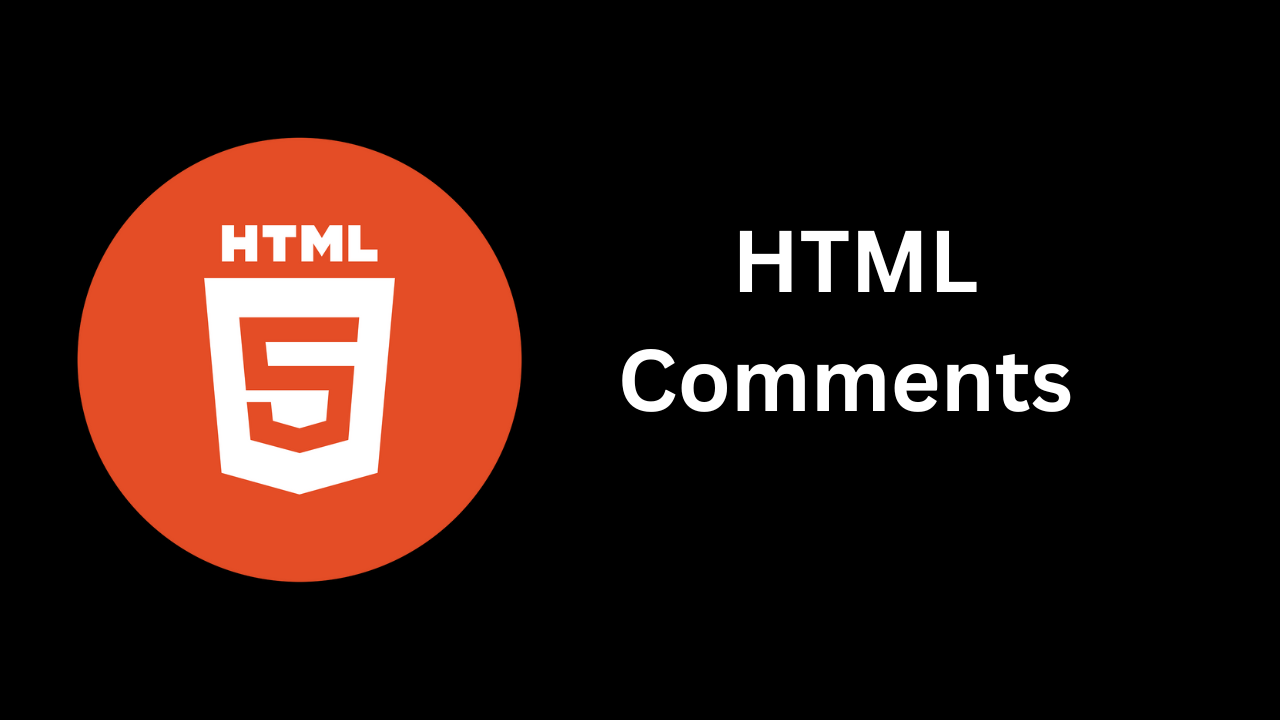HTML Comments
 Shivani Patel
Shivani Patel
HTML comments are a crucial part of writing clean, maintainable web code. They help developers document their code, debug issues, and organize their work. In this detailed guide, we will explore HTML comments in-depth, including their syntax, usage, and best practices.
What Are HTML Comments?
HTML comments are annotations in your HTML code that are not visible in the browser. They are used to explain, document, or temporarily disable parts of your code. Comments are particularly useful for:
Adding explanations or notes for other developers (or yourself) who might work on the code later.
Temporarily removing code from execution without deleting it.
Organizing and structuring complex HTML documents.
Syntax of HTML Comments
The syntax for HTML comments is straightforward:
htmlCopy code<!-- This is a comment -->
Opening Tag:
<!--Content: The text of the comment.
Closing Tag:
-->
Example:
<!-- This is a comment explaining the next section of code -->
<p>This is a paragraph.</p>
Use Cases for HTML Comments
1. Code Documentation
Comments are invaluable for documenting your code. They can explain the purpose of specific sections or provide context for complex code snippets.
Example:
<!-- Navigation section begins here -->
<nav>
<ul>
<li><a href="#home">Home</a></li>
<li><a href="#about">About</a></li>
</ul>
</nav>
<!-- Navigation section ends here -->
2. Debugging
When debugging, you can use comments to temporarily disable parts of your code without deleting them. This helps in testing and troubleshooting.
Example:
<!-- <p>This paragraph is currently hidden for testing purposes.</p> -->
<p>This paragraph is visible.</p>
3. Section Organization
For long HTML documents, comments can be used to mark the beginning and end of different sections, making it easier to navigate and maintain the code.
Example:
<!-- Header Section -->
<header>
<h1>Welcome to My Website</h1>
</header>
<!-- Main Content Section -->
<main>
<p>This is the main content area.</p>
</main>
<!-- Footer Section -->
<footer>
<p>Contact us at info@example.com</p>
</footer>
Best Practices for Using HTML Comments
1. Be Clear and Concise
Ensure that comments are clear and provide useful information. Avoid redundant or obvious comments that do not add value.
Example:
<!-- Header section, contains navigation and site title -->
<header>
<h1>Website Title</h1>
</header>
2. Avoid Overuse
While comments are helpful, overusing them can clutter your code and make it harder to read. Use comments judiciously to avoid overwhelming developers.
Example:
<!-- This is an example of a well-commented section -->
<section>
<h2>Subsection Title</h2>
<p>Description goes here.</p>
</section>
3. Keep Comments Updated
Update comments when you make changes to the code. Outdated comments can be misleading and confusing.
Example:
<!-- Updated to reflect the new layout changes -->
<aside>
<p>Sidebar content here.</p>
</aside>
4. Avoid Sensitive Information
Never include sensitive information (e.g., passwords, API keys) in comments. Comments can be viewed in the page’s source code.
Example:
<!-- Do not include passwords or sensitive data here -->
<form action="/submit" method="post">
<!-- Fields for user input -->
</form>
5. Use Comments for HTML Structure
Comments are useful for structuring and dividing your HTML document into logical sections, improving readability and maintainability.
Example:
<!-- Start of Main Content -->
<main>
<!-- Articles -->
<article>
<h2>Article Title</h2>
<p>Article content goes here.</p>
</article>
</main>
<!-- End of Main Content -->
Advanced Uses of HTML Comments
1. Conditional Comments (for Internet Explorer)
Conditional comments were used to apply specific styles or scripts for different versions of Internet Explorer. While this technique is largely obsolete with modern browsers, it’s worth noting for historical context.
Example:
<!--[if lt IE 9]>
<link rel="stylesheet" href="ie8-and-down.css">
<![endif]-->
2. Debugging with Development Tools
In modern development workflows, comments can be used alongside development tools and version control to track changes and issues.
Example:
<!-- TODO: Refactor this section for better performance -->
<div class="old-style">
<!-- Legacy code that needs updating -->
</div>
Conclusion
HTML comments are a fundamental tool for creating well-organized, maintainable, and understandable web code. By following best practices and using comments effectively, you can enhance the clarity of your code, facilitate teamwork, and streamline the development process. Remember to keep comments clear, relevant, and updated to ensure they add value to your projects.
Feel free to share your own tips or ask questions about using HTML comments. Happy coding! 🖥️✨
Subscribe to my newsletter
Read articles from Shivani Patel directly inside your inbox. Subscribe to the newsletter, and don't miss out.
Written by
